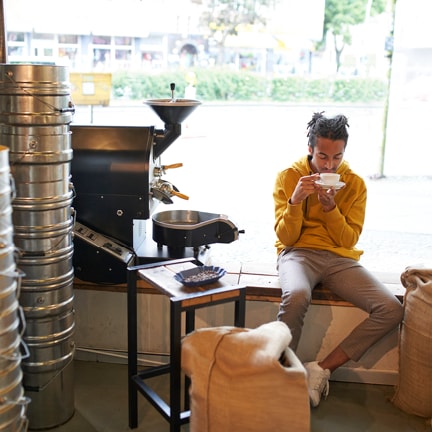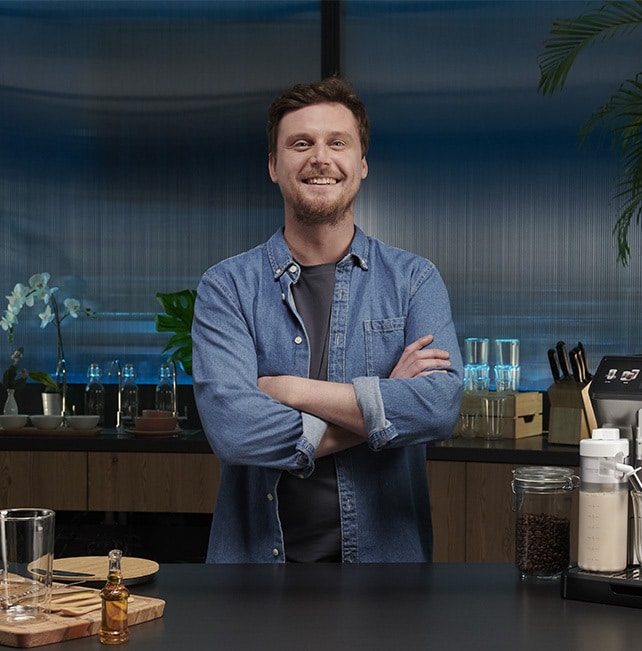- Beans & Roasters
- Sydney Coffee Lounge
The best coffee experience starts here
- Education
- Magazine
- Recipes
- About us
The best coffee experience starts here

Bean culture
Nowadays, “specialty coffee” is a household name, but it’s not always clear what criteria render the coffee special.
Although specialty coffee is often linked to the rise of the third wave in the early aughts, the term dates back to 1974. Moreover, while the two terms are often used interchangeably, they’re not mutually exclusive: not all third-wave coffee is specialty and vice versa.
“Too often, coffee is still simply assumed as a caffeine vehicle,” says Massimo Barnabà, a Trieste-based coffee expert who manages special projects for Bfarm, a coffee academy and consultancy affiliated with the Specialty Coffee Association that’s headquartered near Florence. “It allows you to wake up in the morning or gives you a moment of energy or an excuse to take an afternoon break. Sometimes these goals are achieved, though the drinks do not actually please the senses.” To him, specialty coffee means not only superior quality but the most important result: superior pleasure.
He adds that specialty coffee begins with the coffee’s origins and embraces the entire process. “It requires a knowledge of origins and the provenance of all the work upstream of the bean.” He compares it to a journey that begins with drinking a superb cup of coffee for the first time, discerning what makes the flavors special, and then discovering new and better ones along the way.
Specialty coffee involves “traceability of a supply chain probably single variety, then single processing which then by its nature needs to be toasted, not very different from espresso, to develop certain characteristics,” says Sandro Bonacchi, a co-founder of Bfarm.
Yet, a specialty coffee classification isn’t awarded to producers who tick a bunch of boxes to meet predetermined requirements. Instead, the Specialty Coffee Association implements a 100-point scale to measure a series of standards, and certified blind tasters rate the coffee accordingly–those that score over 80 earn the specialty coffee classification.
Specialty coffee starts with the producers who select their land plot deliberately, implementing a quality over quantity approach. They consider the particularities of the terroir and how the altitude and climate impact the bounty the soil reaps. As a result, most specialty coffee is single-origin, from one estate, not a jumble of beans collected from around the world.
Cherry selection is crucial: specialty coffee is made from the beans of the ripest cherries. Pickers don’t have to meet a quota; they just have to collect the reddest fruit. Unfortunately, manufacturers taking a quantity over quality approach may turn a blind eye to the bad ones, throwing them in with the good ones to maximise the product’s yield.
After the picked cherries pass through a wet mill and are dried, they undergo multiple stages of quality control. First, the process is carried out manually, with producers carefully removing the cherry flesh and discarding all faulty beans. They then taste the coffee to ensure it’s up to par before sending it to the roaster.
Roasting is no small feat: it’s an art in and of itself for which SCA-certified coffee roasters have completed hours of coursework to master. The beans aren’t just thrown on the roaster until a timer beeps: they’re closely monitored to ensure perfect caramelisation of the beans.
Last but not least, extraction involves using water to pull the soluble compounds out of the coffee beans. Specialty beans undergo three levels of inspection before arriving in the hands of the baristas, who understand how to extract the maximum possible flavor from the beans for an enjoyable cup.
Yet, it doesn’t have to be any different at home, where one can extract perfectly with a filter, moka, or espresso machine. “What I like about La Specialista,” says Barnabà, “is that it enhances all of the beans’ flavors and aromas very simply at home.”
After all, according to Barnabà, “the first characteristic of specialty coffee is to give pleasure when it’s being consumed.” So, why not start first thing in the morning?


Testo vario
Join us
Policies
Support

